plane:
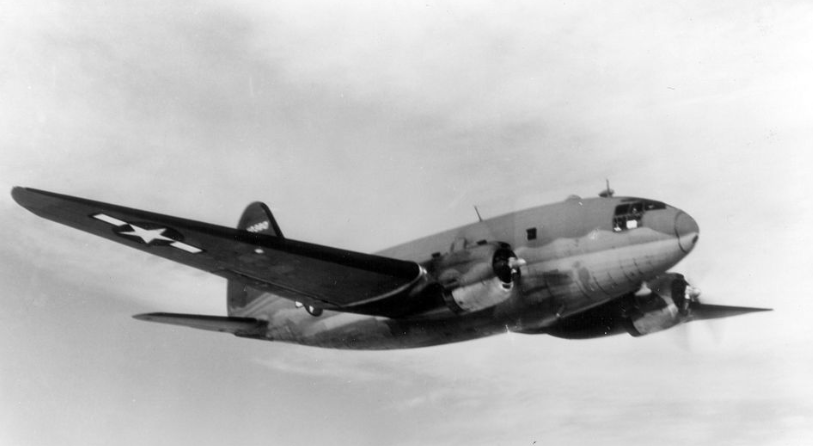
The Curtiss C-46 Commando is a low-wing, twin-engine aircraft derived from the Curtiss CW-20 pressurized high-altitude airliner design. Early press reports used the name "Condor III" but the Commando name was in use by early 1942 in company publicity.[2] It was used primarily as a cargo aircraft during World War II, with fold-down seating for military transport and some use in delivering paratroops. Mainly deployed by the United States Army Air Forces, it also served the U.S. Navy/Marine Corps, which called it R5C. The C-46 filled similar roles as its Douglas-built counterpart, the C-47 Skytrain, with some 3,200 C-46s produced to approximately 10,200 C-47s.
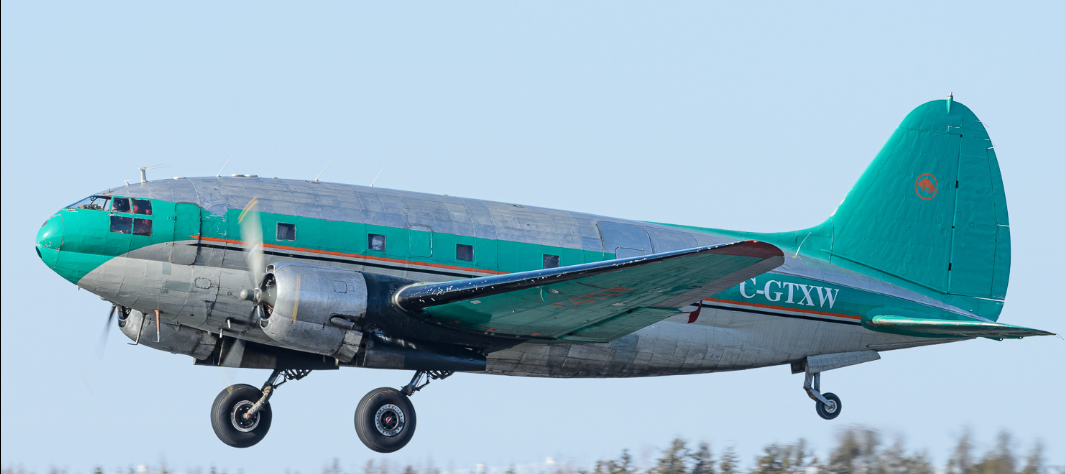
After World War II, a few surplus C-46 aircraft were briefly used in their original role as passenger airliners but the glut of surplus C-47s dominated the marketplace and the C-46 was soon relegated to cargo duty. The type continued in U.S. Air Force service in a secondary role until 1968. The C-46 continues in operation as a rugged cargo transport for arctic and remote locations with its service life extended into the 21st century.[3]
Development:
The prototype for what would become the C-46, the Curtiss CW-20, was designed in 1937 by George A. Page Jr., the chief aircraft designer at Curtiss-Wright.[4] The CW-20 was a private venture intended to compete with the four-engined Douglas DC-4 and Boeing 307 Stratoliner by the introduction of a new standard in pressurized airliners.[5] The CW-20 had a patented fuselage conventionally referred to as a "figure-eight" (or "double-bubble"), which enabled it to better withstand the pressure differential at high altitudes.[6] The sides of the fuselage creased at the level of the floor that separated the two portions and shared in the stress of each, rather than supporting itself. The main spar of the wing could pass through the bottom section, which was mainly intended for cargo, without intruding on the passenger upper compartment.[6] A decision to use a twin-engine design instead of a four-engines was considered viable if sufficiently powerful engines were available, allowing for lower operating costs and a less complex structure.[7]
Engineering work involved a three-year commitment from the company and incorporated an extensive amount of wind tunnel testing at the California Institute of Technology (Caltech). The resultant design was a large, aerodynamically "sleek" airliner, incorporating the cockpit in a streamlined glazed "dome".[N 1] The engines featured a unique nacelle tunnel cowl where air was induced and expelled through the bottom of the cowl, reducing turbulent airflow and induced drag across the upper wing surface.[6] After a mock-up was constructed in 1938, Curtiss-Wright exhibited the innovative project as a display in the 1939 New York World's Fair.[8]
The company approached many airlines to obtain their requirements for an advanced airliner. No firm orders resulted, although 25 letters of intent were received, sufficient to begin production.[8] The design of a 24–34 passenger airliner proceeded to the prototype stage as the CW-20 at the St. Louis, Missouri facility with the initial configuration featuring twin vertical tail surfaces. Powered by two 1,700 hp (1,300 kW) R-2600-C14-BA2 Wright Twin Cyclones, the prototype, registered NX-19436 flew for the first time on 26 March 1940 with test pilot Edmund T. "Eddie" Allen at the controls. After testing, modifications, including the fitting of a large single tail to improve stability at low speeds were made.[9][10]
The first prototype was purchased by the United States Army Air Forces (USAAF) to serve as a master for the series and was named C-55. After military evaluation, the sole example was returned to Curtiss-Wright and subsequently re-sold to the British Overseas Airways Corporation (BOAC).[8] During testing, General Henry H. "Hap" Arnold became interested in the potential of the airliner as a military cargo transport and on 13 September 1940, ordered 46 modified CW-20As as the C-46-CU Commando; the last 21 aircraft in this order were delivered as Model CW-20Bs, called C-46A-1-CU. None of the C-46s purchased by the U.S. military were pressurized and the first 30 delivered to the AAF were sent back to the factory for 53 immediate modifications.[5][11][12] The design was then modified to the C-46A, receiving enlarged cargo doors, a strengthened load floor and a convertible cabin that speeded changes in carrying freight and troops. The C-46 was introduced to the public at a ceremony in May 1942, attended by its designer, George A. Page Jr.[4]
A total of 200 C-46As in two batches were ordered in 1940, although only two were actually delivered by 7 December 1941.[5][13] An important change was made: more powerful 2,000 hp (1,500 kW)c Pratt & Whitney R-2800 Double Wasp engines replaced the Twin Cyclones. By November 1943, 721 modifications had been made to production models, although many were minor, such as fuel system changes and a reduction in cabin windows.[14] Subsequent military contracts for the C-46A extended the production run to 1,454 examples, 40 of which were destined for the U.S. Marine Corps, to be called R5C-1. The military model was fitted with double cargo doors, a strengthened floor and a hydraulically operated cargo handling winch; 40 folding seats were the sole passenger accommodation for what was essentially a cargo hauler.[14] Two C-46 were delivered from Higgins Industries Michoud Factory Field in 1942.[15]
The final large production-run C-46D arrived in 1944–45 and featured single doors to facilitate paratroop drops. Production totaled 1,430 aircraft.[14] Although a one-off XC-46B experimented with a stepped windscreen and more powerful engines, a small run of 17 C-46Es had many of the same features as the XC-46B, along with three-bladed Hamilton-Standard propellers replacing the standard Curtiss-Electric four-bladed units. A last contract for 234 C-46Fs reverted to the earlier cockpit shape but introduced square wing tips. A sole C-46G had the stepped windscreen and square wing tips but the end of the war resulted in the cancellation of any additional orders for the type.[12]
Specifications
General Characteristics
- Created On Android
- Wingspan 107.4ft (32.7m)
- Length 75.0ft (22.9m)
- Height 28.2ft (8.6m)
- Empty Weight 32,137lbs (14,577kg)
- Loaded Weight 54,796lbs (24,855kg)
Performance
- Horse Power/Weight Ratio 0.063
- Wing Loading 32.9lbs/ft2 (160.5kg/m2)
- Wing Area 1,667.4ft2 (154.9m2)
- Drag Points 12446
Parts
- Number of Parts 80
- Control Surfaces 6
- Performance Cost 434

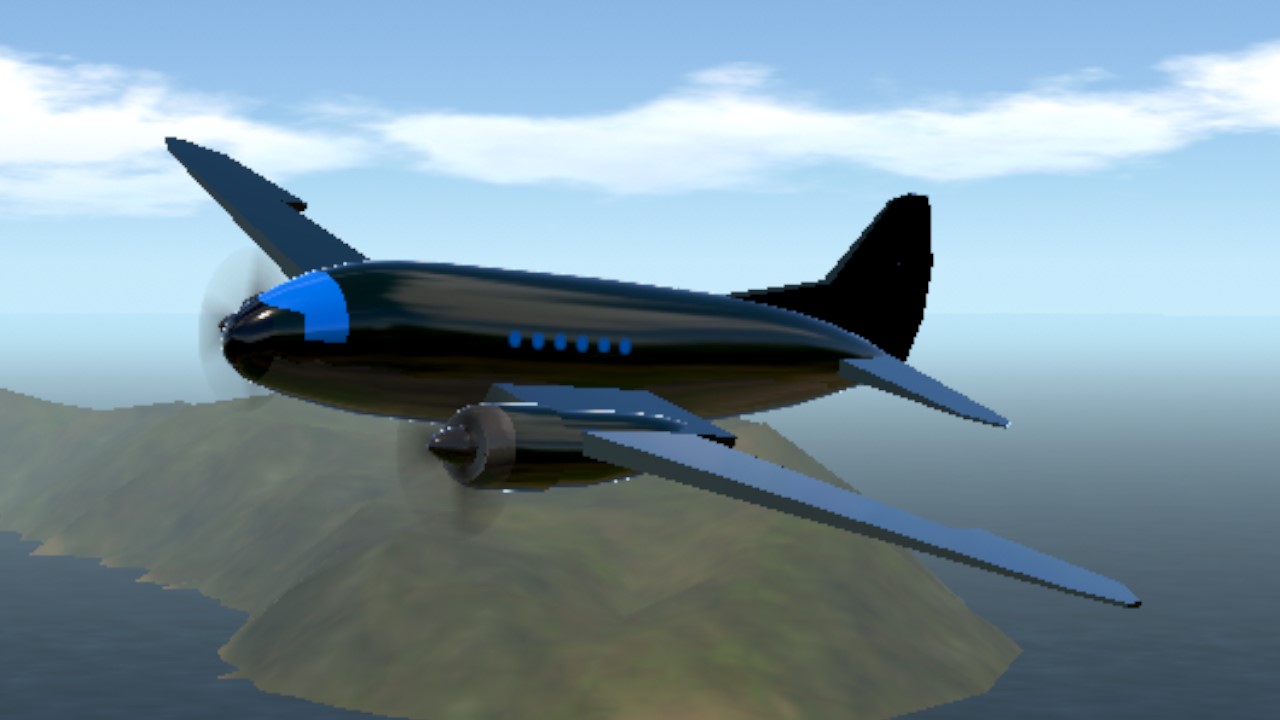
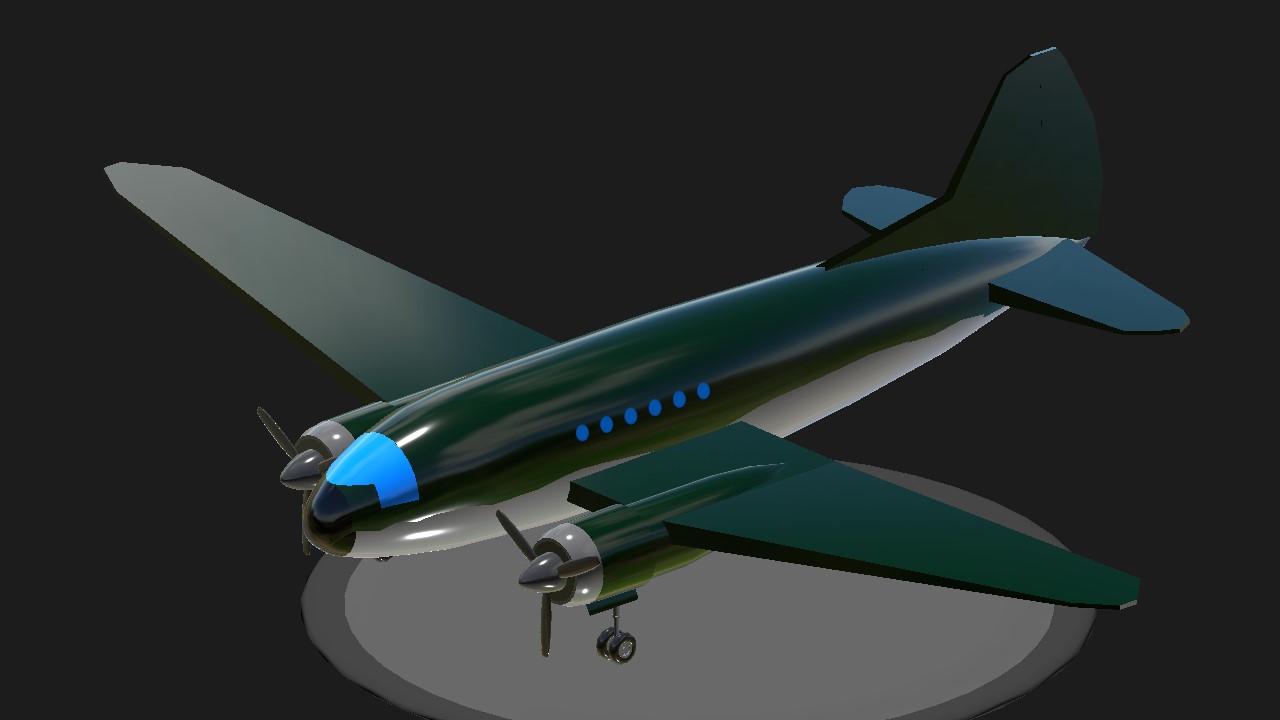
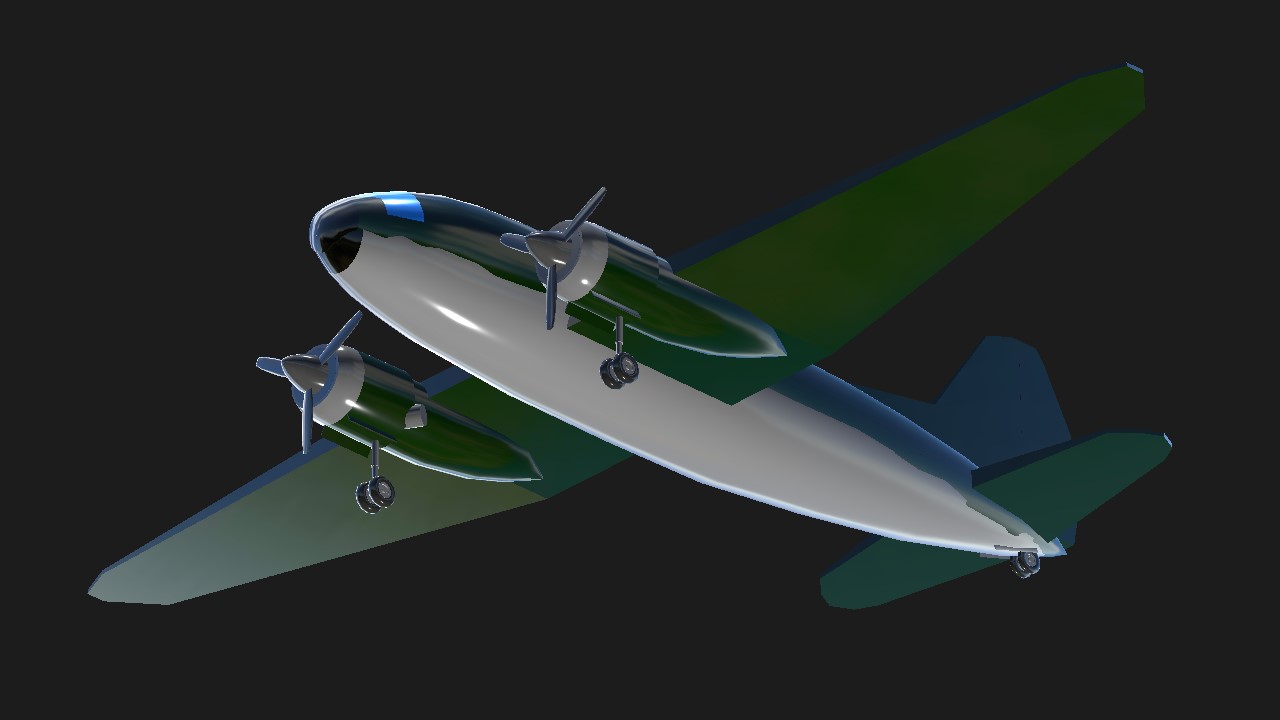
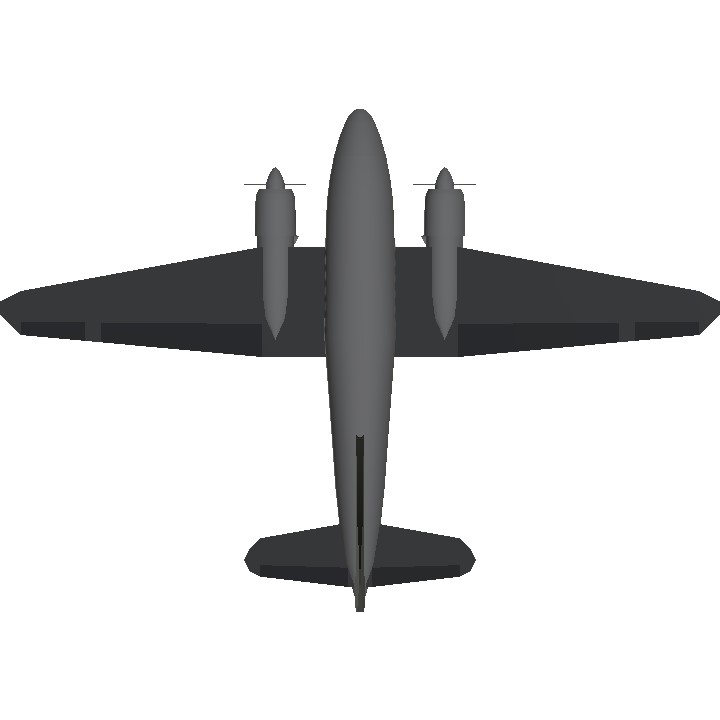
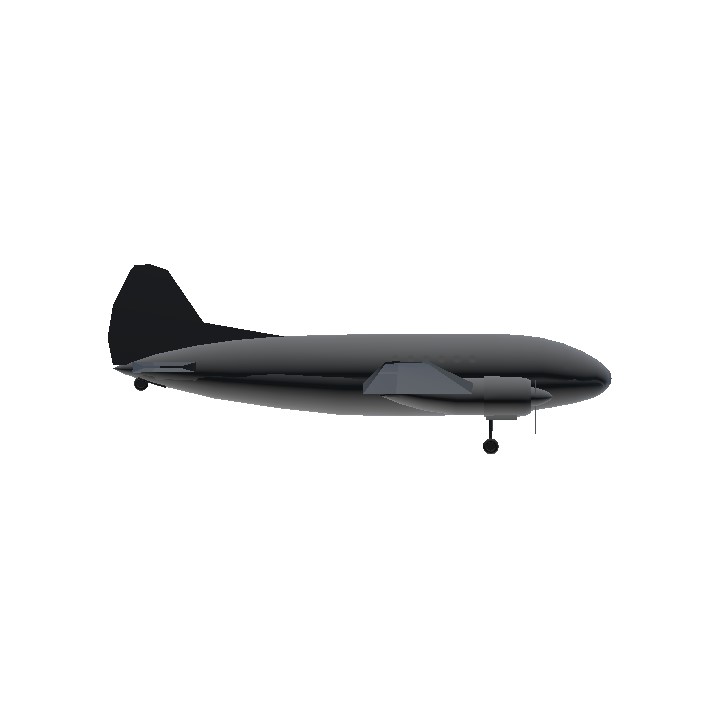
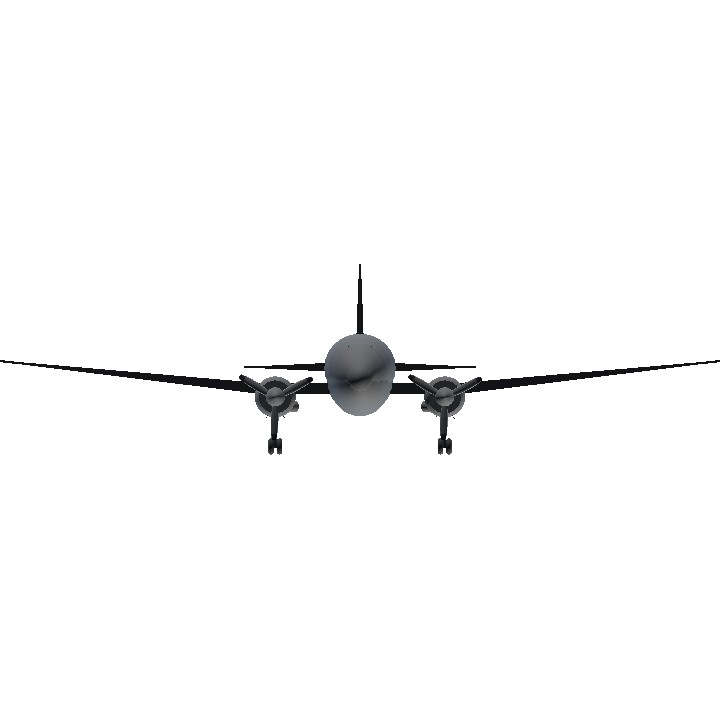
@Mitterbin yeah it's pretty cool :)
cool airline prop.
I have new post plane